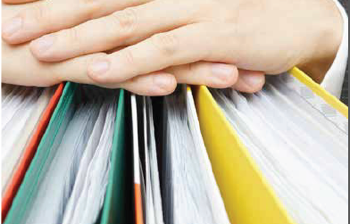Please download this article as a PDF
Download PDFWhat you need to know for 2019/20.
With the Brexit process rumbling on, Making Tax Digital finally coming into force, and Easter around the corner, now is the time to put your financial plans in place for 2019/20.
Income
The way you receive an income, and the rates and allowances that apply, should be at the front of your mind when it comes to planning your personal finances.
How much you pay will depend on where you live in the UK, with Scotland in receipt of devolved powers to set their own income tax bands on top of the UK-wide personal allowance.
| Income tax 2019/20 | England, N. Ireland & Wales | Scotland | ||
| Threshold | Tax rate | Threshold | Tax rate | |
| Personal allowance | Over £12,500* | 0% | £12,500* | 0% |
| Starter rate | n/a | n/a | Over £12,500 – £14,549 | 19% |
| Basic rate | Over £12,500 – £50,000 | 20% | Over £14,549 – £24,944 | 20% |
| Intermediate rate | n/a | n/a | Over £24,944 – £43,430 | 21% |
| Higher rate | Over £50,000 – £150,000 | 40% | Over £43,430 – £150,000 | 41% |
| Additional rate | Above £150,000 | 45% | Above £150,000 | 46% |
| Sources: GOV.UK | GOV.SCOT | ||||
*Personal allowance reduces by £1 for every £2 of income above £100,000, up to £125,000.
Dividends
The annual dividend allowance remains at £2,000 for 2019/20 after reducing from £5,000 this time last year.
With the new personal allowance of £12,500 added to the frozen dividend allowance, the maximum tax-free income you can receive through dividends is £14,500 in 2019/20.
Anything not already covered by the personal allowance is taxed at the following rates, regardless of where you live in the UK:
- 7.5% for basic-rate taxpayers – over £14,500 to £50,000
- 32.5% for higher-rate taxpayers – over £50,000 to £150,000
- 38.1% for additional-rate taxpayers – above £150,000.
Capital gains
If you own any chargeable assets that have increased in value when the time comes to sell, your profit may be liable to capital gains tax (CGT).
The tax-free allowance for these gains in 2019/20 is £12,000, or £6,000 for assets held in trust.
If any gain over and above the tax-free allowance when added to your income is within your basic-rate band, CGT will be paid at the rate of 10%. Once the gain takes you into the higher-rate band, CGT is payable at 20%.
The rates differ if you are selling residential property which is not your principal private residence, at 18% in the basic-rate band and 28% above the basic-rate band.
Extra income
Some smaller amounts of income are tax-free up to annual limits.
Under the Government’s rent-a-room scheme, you can continue to earn tax-free income of up to £7,500 a year from letting out a furnished room in your home.
You can opt into the scheme if you earn more than this amount from renting a room and want to claim the allowance, although it may be more tax-efficient to deduct expenses from such income.
This also includes renting out your spare room through Airbnb, so you could take advantage of the allowance by letting a room in your main home to holidaymakers over short periods of time.
The relief is halved if you share the income, for instance, with your partner. If you let property that does not qualify for the scheme, a £1,000 property allowance applies instead.
There’s also a £1,000 trading allowance that applies to any income from trading, which could apply if you sell in small amounts on eBay or Etsy.
If you claim any of these allowances, you won’t be able to deduct any business expenses.
Foreign income
How many days you spend in the UK determines your residential status for UK tax purposes, although rules surrounding this are very complex.
If you are a UK resident but not domiciled here, you may need to pay UK tax on your foreign income.
Foreign income or gains for non-domiciled UK tax residents will be taxed if they exceed £2,000 in 2019/20, or if they are brought into the UK, including if they are moved to a UK bank account.
If you have foreign income of more than £2,000, you may be able to claim the remittance basis, which means you will only pay tax on what you bring into the UK.
You will lose your tax-free allowances and may have to pay an annual charge if you go down this route. If you do not claim the remittance basis you will pay UK tax on your worldwide income.
Savings
Reviewing how your savings are performing is always a must-do in terms of maximising tax efficiency.
Whether you are protecting your wealth from tax or aiming to grow it, think about where you are putting money each year.
Personal savings allowance
Your personal savings allowance allows you to earn up to £1,000 in interest from your savings each year, without paying any tax.
This is reduced to £500 for higher-rate taxpayers, and is removed altogether for additional-rate taxpayers.
It’s also possible to make use of the starting rate for savings, which allows up to £5,000 of tax-free interest in certain circumstances.
The more you earn from other income, such as your wages or pension, the less your starting rate for savings will be.
ISAs
ISAs are tax-free up to a value of £20,000, whether on interest or on income from investments.
Types of ISA include cash, stocks and shares, innovative finance ISAs, lifetime ISAs, and junior ISAs for under-18s.
You can opt to put all your savings in one type of ISA, or you could split them across several items.
Bear in mind, some products, such as the lifetime ISA and junior ISA, have maximum annual contribution limits.
Family tax planning
Marriage allowance
If you earn less than your spouse or civil partner, you can transfer £1,250 of your personal allowance to them in 2019/20 by taking advantage of the marriage allowance.
You will need to earn less than £11,250 to be able to do this without paying any tax, but this can reduce their tax bill and can be backdated for four years.
The marriage allowance is only available if one spouse or civil partner earns less than the personal allowance, and the other is a basic-rate taxpayer.
Inheritance and the family home
No inheritance tax is deducted from your estate if you were to die and leave your home to your spouse or civil partner in 2019/20.
If you pass it on to anyone else, such as a child or grandchild, it will be subject to inheritance tax if its value is above the threshold (£325,000) at the date of death.
An additional allowance called the residence nil-rate band, which increased to £150,000 in April 2019, is available in certain circumstances.
It works on top of the £325,000 basic nil-rate band when passing on the family home to your children or grandchildren, or other direct descendants.
You may be able to pass on the family home worth up to £475,000 – £950,000 if you are married or in a civil partnership – in 2019/20 without your estate being liable for inheritance tax.
A number of conditions apply, so be sure to seek professional advice.
Pensions
The annual pensions allowance enables you to contribute up to £40,000 in 2019/20, while you can also utilise any unused allowance from the last three tax years of an existing pension scheme.
If your adjusted income exceeds £150,000 in 2019/20, your annual allowance will be reduced by £1 for every £2 that exceeds this threshold down to a limit of £10,000.
You will retain your entire allowance if your threshold income is lower than £110,000 in 2019/20.
However, if you have withdrawn any flexible benefits, the money purchase annual allowance of £4,000 will apply instead of the annual allowance.
The total amount you can save into a pension over the course of your life increased to £1.055 million for 2019/20, although your pension will trigger an extra tax charge if exceeds this.
Speak to us about your personal tax planning.




